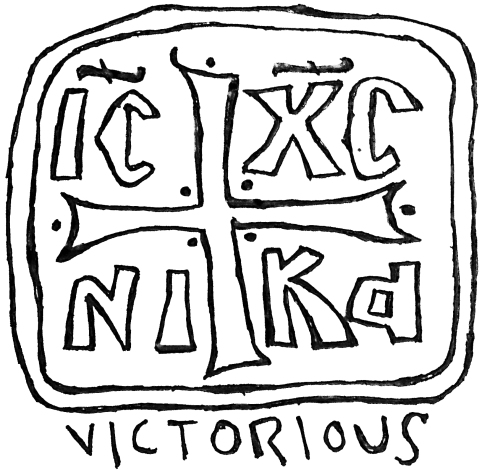The sign of the cross is one of the most ancient and revered customs of the Church. St. Gaudentius of Brescia, a fourth/fifth century saint, said: “Let the sign of the cross be continually made on the heart, on the mouth, on the forehead, at table, at the bath, in bed, coming in and going out, in joy and sadness, sitting, standing, speaking, walking; in short, in all our actions. Let us make it on our breasts and all our members, that we may be entirely covered with this invincible armor of Christians.”
The Orthodox Church engages in worship using all five senses, and the sign of the cross is a physical prayer. And we use it a lot! In some parishes, you might see someone cross him or herself hundreds of times in a single service!
The general idea of the sign of the cross is identifying and calling to mind the death of Christ on the cross. It’s a prayer for God to bless you. It’s an acknowledgement of prayer, and a calling on the mercy of God. Some might even see it as a reminder of their baptism and chrismation, when they entered the Church and the sign of the cross was made on them many times, declaring them a beloved child of God!
In current Orthodox practice, the sign is made by holding the right hand’s thumb, index finger, and middle finger together, and tucking the ring and pinky fingers into the palm, side-by-side. The three fingers together symbolize the Trinity, and the two remaining fingers represent the two natures of Christ. Then, the sign begins by touching the forehead with the three fingers, bringing the hand straight down to the torso or chest, over to the right shoulder, then to the left shoulder.
Typically the signing is completed by a slight bow of the head, or by a full bow, where the signer reaches all the way to the ground and touches it briefly. In some cases, the crossing is punctuated with a full, facedown prostration on the ground.
We cross ourselves many times throughout the day, and throughout a worship service. It is customary to cross oneself when entering and exiting a church building. We cross ourselves before venerating an icon or a relic. We cross ourselves during prayer, sometimes at the beginning and the end of a prayer. Many will cross during litanies, as we sing, “Lord have mercy!” or “Grant this, O Lord!” We cross near the end of reciting the Nicene Creed, before and after the Gospel reading in the service, and many cross themselves when the Holy Gifts are brought out in the midst of the congregation during the Great Entrance.
Crossing yourself is acceptable just about any time. However, it is preferred that you don’t cross yourself “at” a priest or bishop, even when he is blessing you, and it’s generally frowned upon to cross yourself when receiving the Body and Blood of Christ at communion (accidents happen!).
Sidebar: The Russian “Old Believers” or “Old Ritualists” cross themselves slightly differently. They place their thumb, ring finger, and pinky together in the palm, and have their index and middle fingers together in a pointed fashion. There are a few Old Believer communities in communion with the worldwide Orthodox communion of Churches. If you belong to one of these communities, this would be the way to cross yourself. If you do not, then don’t. Cross yourself in unity with your worshiping community.

